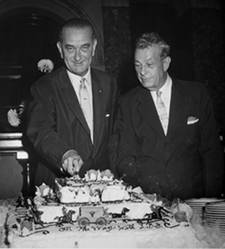We live in an age of rivers and streams. As the internet becomes the live web, it’s an increasingly large set of streaming data– images, video, text and sound. We’re back to the infinite number of cable channels that we surf between and among. These streams move at different speeds and are made up of objects/items of different sizes.
Television is the new internet. The Network swallowed the old television network whole. Of course, that was after the DVR permanently changed broadcasting’s relationship with time. Now even live broadcasts can be paused and reversed. The DVR started with one tuner, and moved to two tuners, so two shows could be recorded at the same time. YouTube added an infinite number of tuners.
The remote control is the user interface for the DVR/TV. It switches between channels, scrolls through recordings, searches by title, and controls the flow. These controls are starting to find their way into the live web. Both election.twitter.com and real time friendfeed have added the pause button to stop and start the stream.
Martin Heidegger returned to the ancient Greek idea of aletheia to think about the idea of truth. Here’s a brief explanation:
…aletheia is the truth that first appears when something is seen or revealed. It is to take out of hiddenness to uncover. It is not something that is connected with that which appears. Allowing something to appear is then the first act of truth; for example, one must give attention to something before it can be a candidate for any further understanding, for any understanding of space it must first somehow appear. Untruth, then, is something concealed or disguised.
Contained in aletheia is the river Lethe , one of several rivers in Hades– it literally means forgetfulness or concealment. Aletheia is discovery, uncovering truth that is hidden from view. We can search the past, the stream that has passed us by; or we can track the stream as it first appears. Our tools and interfaces to manage these rivers and streams are primitive. We barely even have a working remote control. Our toolkits are designed to manage documents, we need tools to manage and create streams.
Comments closed

